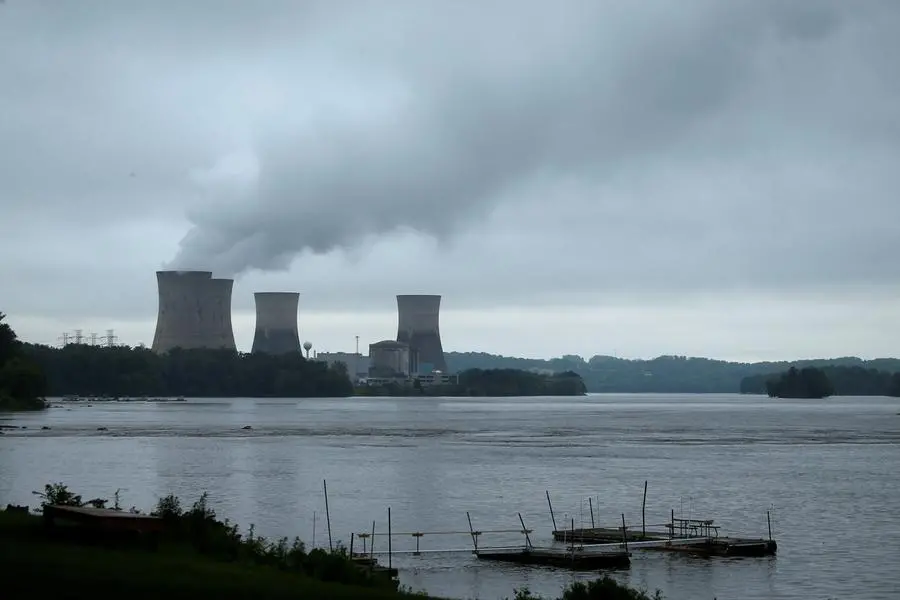PHOTO
The U.S. proposed rules on Friday for how energy companies can access billions of dollars in tax credits for producing low-carbon hydrogen using new clean energy sources but left thorny issues, such as how nuclear power could benefit, uncertain.
The credit will be based on the lifecycle greenhouse gas emissions from the power source used in hydrogen production, and ranges from 60 cents to $3 per kilogram, the Treasury Department said in the 128-page proposal.
"The 45V clean energy hydrogen production tax credit is an important part of our strategy to unlock private investment across sectors to build a clean energy economy and tackle the climate crisis," John Podesta, a White House climate adviser, told reporters in a call.
To get the credit, hydrogen producers would have to prove they have used clean electricity built within three years that a hydrogen plant went into service.
That has concerned nuclear power producers looking to produce hydrogen using their virtually emissions-free electricity. Existing nuclear power is featured in three of the seven hydrogen hubs the Energy Department is supporting with billions of dollars in public funding. But building new nuclear power is costly and fraught with delays.
Business groups including the Chamber of Commerce have slammed new clean energy requirements, saying it will slow down the build-out of a hydrogen economy.
Renewable energy backers and many environmental groups say it is necessary to keep carbon-emitting fossil fuel from powering hydrogen production
The Biden administration believes that low carbon hydrogen can fight climate change by fueling heavy industry such as aluminum, cement and steel and long-haul transportation.
The credits were outlined last year in President Joe Biden's signature climate law, the Inflation Reduction Act, and are part of the administration's plan to put the country on a path to producing 50 million metric tons of the fuel by 2050.
Streams of clean hydrogen can be produced with electrolyzers powered by wind and solar power, nuclear, or natural gas with carbon capture, that split water into hydrogen and oxygen.
Today the vast majority of hydrogen is produced with fossil fuels with unabated emissions, at a fraction of the cost of clean hydrogen.
The proposal also says the clean power must also have been sourced from the same region as the hydrogen producer. And the clean power must also have been generated about the same time that the hydrogen was produced, though under the proposal, this would be measured on an annual, not an hourly, basis until 2028.
'SURRENDER LEADERSHIP' ON NUCLEAR
Operators of nuclear power say the credit is necessary to produce hydrogen and help keep plants open.
A senior U.S. official said there are potential pathways for nuclear power to get the credit, including upgrading or relicensing plants, or showing how producing hydrogen would help them avoid shutting plants.
The proposed rule will undergo 60 days of comment and public hearings before being finalized with input from nuclear and other power generators.
The proposal asks the nuclear industry and other low carbon power generators for input on which pathways would help it the most. The proposal contains a carve-out for nuclear that allows a percentage of a company's power generation to go into clean hydrogen, but the administration needs more information from the industry, a senior official told reporters on the call.
Constellation, the largest U.S. nuclear power operator which hopes to build a $900 million hydrogen production facility at an Illinois plant, slammed the proposal as delaying action and that it would not allow a path to the full credit.
"If finalized, America will surrender hydrogen and deep decarbonization leadership to China and Europe, both of which have policies that smartly utilize their existing nuclear plants to make hydrogen and speed decarbonization," Constellation said in a statement.
The proposal also suggests ways that natural gas emitted from landfills, called renewable natural gas, and gas emitted from oil drilling could be captured and used for hydrogen production.
(Reporting by Timothy Gardner; Editing by Christopher Cushing)





















